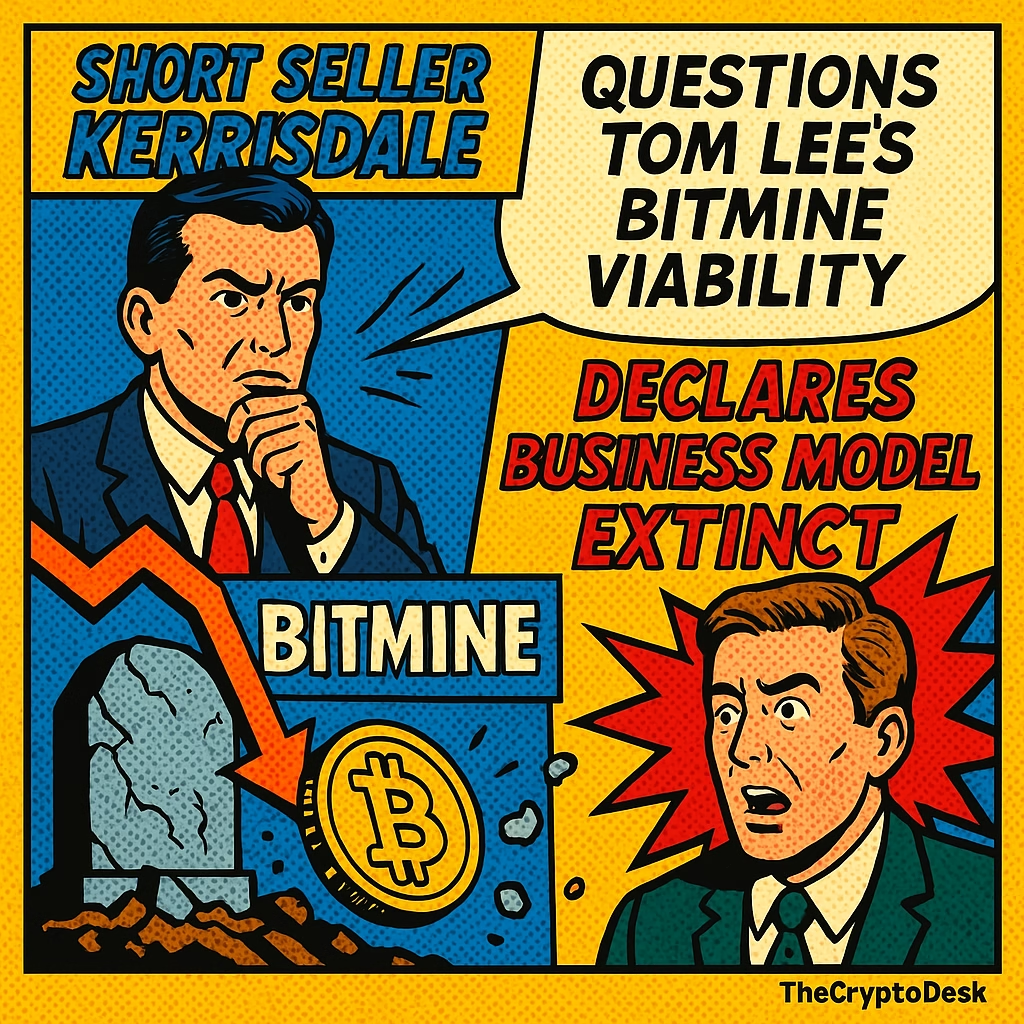In a dramatic turn of events, shares of BitMine Immersion Technologies (BMNR) experienced significant fluctuations on Wednesday following a bearish report from the renowned short-selling firm, Kerrisdale Capital. Dubbed as a “relic on the verge of extinction,” Kerrisdale’s critique has raised eyebrows and questions about BitMine’s sustainability in a fast-evolving crypto landscape. So, what does this mean for BitMine and the broader crypto community?
As the market watched keenly, Kerrisdale Capital publicly shorted BitMine, particularly targeting its strategy of trading shares for Ethereum (ETH). This approach, which initially garnered attention, is now seen by Kerrisdale as increasingly outdated and no longer capable of justifying the company’s premium market valuation. In the eyes of the analysts, BitMine’s market value seems to be converging dangerously close to the actual worth of its crypto holdings, which could translate to waning interest from investors.
What stands out about BitMine is its transformation: once primarily a Bitcoin mining entity, the company pivoted earlier this year to become the largest public holder of Ethereum, boasting billions of dollars in ETH. After conducting their assessment, Kerrisdale estimated that BitMine’s balance sheet supports roughly nine ETH for every 1,000 shares. However, this strategy of issuing shares to acquire tokens is under scrutiny. Will it be enough to entice today’s savvy investors? Kerrisdale is skeptical, claiming that “the playbook of issuing shares to buy tokens has reached its limit.”
Despite the harsh commentary, BitMine’s shares managed to defy expectations, closing up 1.35% at $60 after dipping to $57.41 earlier in the day. The resilience shown by the stock, which also saw a post-market rise of 0.4%, signals that some investors may still see potential in BitMine’s model despite the criticisms.
$BMNR’s premium has been sliding lower and lower, and will probably continue bleeding until it’s at NAV or below. The lower it goes, the slower the ETH-per-share accretion, until it collapses below 1. MNav is ~1.4x today, with 40%+ downside 5/9— Kerrisdale Capital (@KerrisdaleCap) October 8, 2025
Kerrisdale is no stranger to targeting overvalued crypto firms, having previously shorted companies like Riot Platforms and Strategy, the latter founded by Bitcoin bull Michael Saylor. While Riot dismissed Kerrisdale’s critiques as “unsound,” Saylor has stayed committed to his aggressive Bitcoin tactics, seemingly unfazed by external reports. Kerrisdale’s latest note focused on BitMine’s approach to capital raising, calling out the excessive stock dilution resulting from a staggering $10 billion in new share offerings over just three months. They characterized the recent $365 million capital raise as “a discounted giveaway disguised as a premium deal.”
The criticisms don’t stop there; Kerrisdale also pointed out that BitMine’s executive chairman, Tom Lee, while a recognizable figure, lacks the charismatic pull of someone like Michael Saylor. They argue that for BitMine to thrive, it needs a blend of scarcity, innovation, and a more compelling brand aura—all of which they claim are currently missing.
Kerrisdale wrapped up its report with a powerful declaration: their short position isn’t a critique against Ethereum itself but against the premium investors are willing to pay for an intermediary like BitMine. “If you want ETH, just buy it directly, stake it, or invest through one of the new ETFs,” they assert, emphasizing that BitMine’s “middleman pitch” may have worn thin.
As institutional interest in Ethereum builds momentum, it’s essential to note that treasury firms and exchange-traded funds (ETFs) now collectively hold over 12.5 million ETH, accounting for approximately 10.31% of the network’s total supply. According to data from StrategicETHReserve, corporate treasuries currently own around 5.66 million ETH, while spot Ethereum ETFs have accumulated another 6.81 million ETH. This trend marks a decisive shift among institutions towards Ethereum as a productive asset, echoing similar accumulation patterns seen with Bitcoin in recent years. Notably, in October, US-listed spot Ether ETFs boasted net inflows of $621.4 million, more than doubling the $285.7 million seen in September. In August, inflows even peaked at an impressive $3.9 billion, highlighting the enduring appetite for Ethereum.
In a noteworthy example of institutional confidence, SharpLink Gaming disclosed this week that it holds a whopping 839,000 ETH without any debt—a clear testament to the growing trust in Ethereum as a long-term investment.
As the dust settles on this stormy exchange, it’s clear that the relationship between BitMine, Kerrisdale, and the broader cryptocurrency market is anything but settled. While the immediate future may look challenging for BitMine, the increasing institutional adoption of Ethereum could ripple through the market in ways we are just beginning to understand. Stay tuned, as this narrative continues to unfold.
